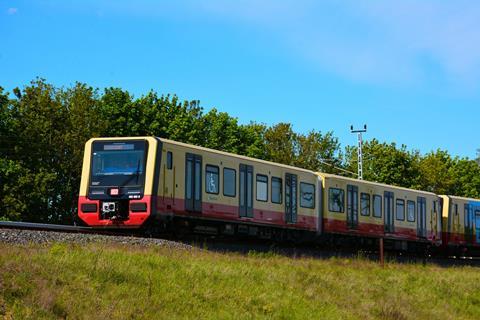
GERMANY: The first Class 483/484 EMUs for the Berlin S-Bahn network began running on route S47 in the early hours of January 1, as the route became the first in the city to be operated under a tendered contract.
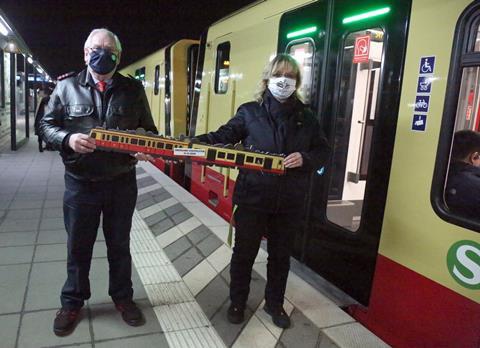
The Spindlersfeld – Tempelhof/Südkreuz – Bundesplatz route S47 is the first of five lines in the Ring & Branches concession to be run under a 15-year contract awarded to the incumbent operator, DB subsidiary S-Bahn Berlin GmbH, by Verkehrsverbunds Berlin-Brandenburg in December 2015. The service has been transferred to the new concession under a phased implementation plan which will see routes S46, S8 and S41/S42 transfer by October 2023.
The Ring & Branches package includes the supply of 382 EMU vehicles by a consortium of Siemens Mobility and Stadler, which are being formed as 21 two-car sets designated Class 483 and 85 four-car Class 484s. An initial batch of 10 pre-series trains is scheduled to enter service during January, gathering operational experience that will feed back into the series production now underway. The first six-car train was launched from Schöneweide just after midnight to operate a special New Year’s Eve service to Spindlersfeld, with two more trains entering service between Spindlersfeld and Hermannstrasse later in the day.
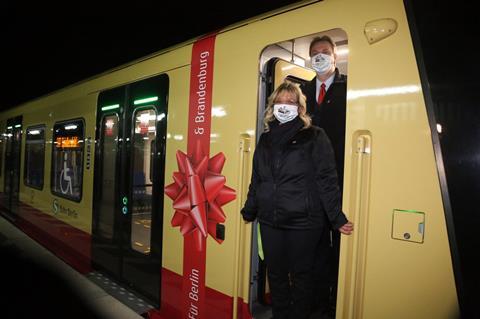
The pre-series trains have been extensively tested for around two years before entering service. The first were trialled at the Siemens Mobility test centre in Wegberg-Wildenrath from late 2018 until early 2020. A four-car unit underwent a 12-week climate testing programme at Rail Tec Arsenal in Wien at the end of 2019. Since September 2019, the trains have been tested across the 340 km Berlin S-Bahn network, accumulating around 150 000 train-km to evaluate their performance and reliability. This led to their approval for passenger service by the Federal Railway Office in October 2020. An initial batch of 114 drivers has already been trained to operate the fleet.
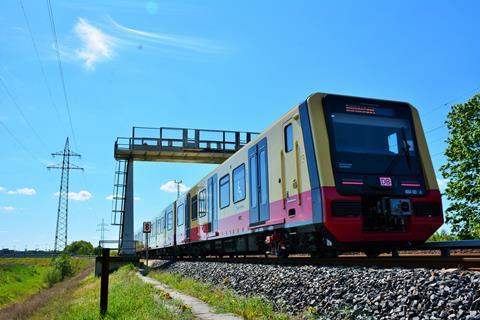
‘These are the most comfortable trains in the long history of the Berlin S-Bahn’, said S-Bahn Berlin CEO Peter Buchner. ‘Together with Siemens and Stadler, we have been working towards this moment for five years. We closely accompanied the production, testing and acceptance of the trains and prepared ourselves intensively, including the training of drivers and employees in the Grünau workshop.’
‘With the new generation of S-Bahn trains, comfort, reliability and performance are significantly increased’ explained Regine Günther, Berlin’s Senator for Environment, Transport & Climate Protection. ‘S-Bahn travel will become more attractive and even more barrier-free. More modern carriages will follow in the coming years and make it easier for passengers to switch to public transport. This will accelerate climate protection and modal shift.’
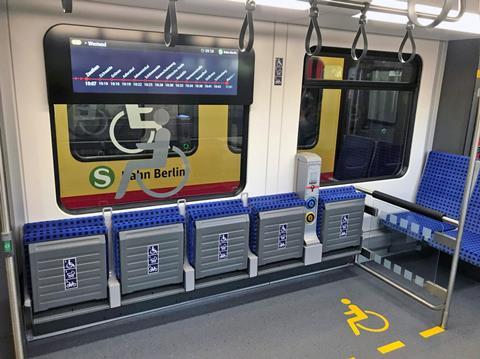
Describing the introduction of the trains as ‘good news for commuters in the capital region’, Brandenburg’s Minister for Infrastructure & Regional Planning Guido Beermann noted that the contract would provide additional vehicles to boost the capacity of the S-Bahn fleet.
Siemens Mobility’s CEO of Rolling Stock Albrecht Neumann added that ‘Siemens Mobility and Stadler are both deeply rooted in Berlin, and together we have designed and built a train for S-Bahn Berlin that will operate for decades with the highest reliability. The new trains combine cutting-edge technology and robust redundancy-assured quality with improved passenger experience and greater comfort.’
Stadler Germany CEO Jure Mikolčić said the ‘ultra-modern “Made in Berlin” units are precisely tailored to the requirements of S-Bahn Berlin and its passengers. The first-time use of air conditioning systems, improved options for storing luggage and packages, and a significantly quieter ride make traveling in the trains more comfortable and convenient. And thanks to their redundant traction system, the trains are far more robust and reliable.’



